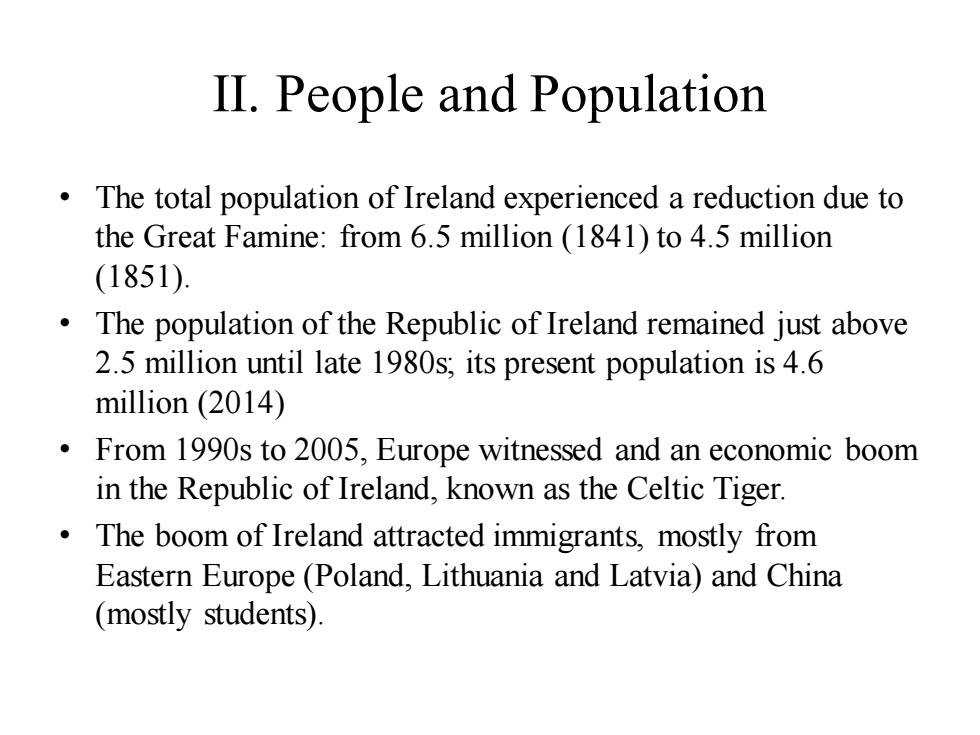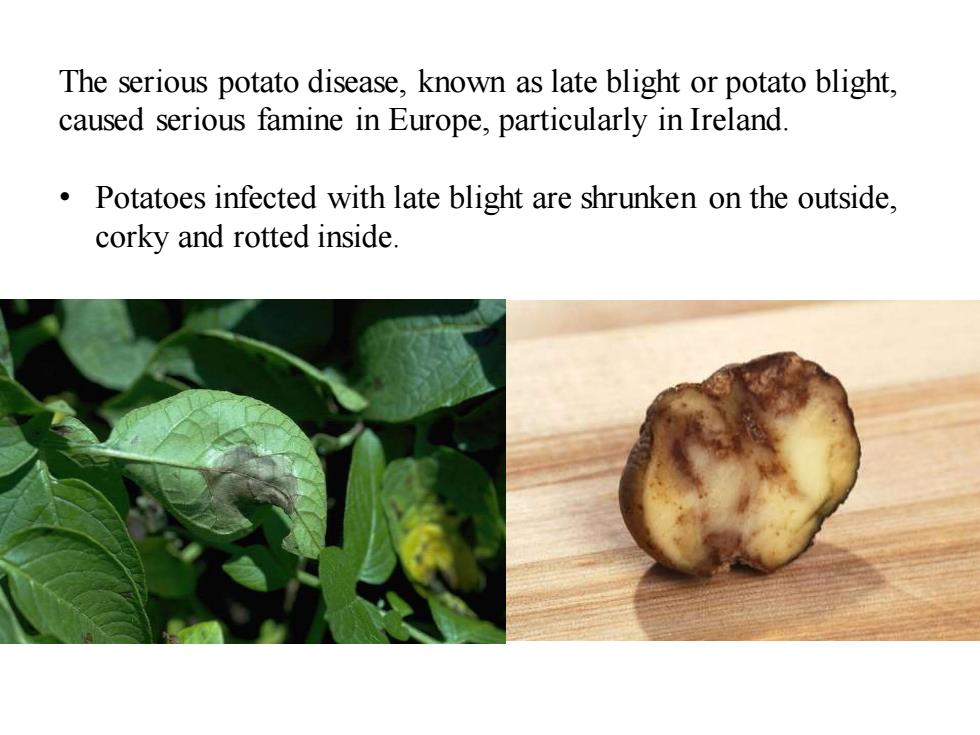
II.People and Population The total population of Ireland experienced a reduction due to the Great Famine:from 6.5 million (1841)to 4.5 million (1851) The population of the Republic of Ireland remained just above 2.5 million until late 1980s;its present population is 4.6 million (2014) From 1990s to 2005,Europe witnessed and an economic boom in the Republic of Ireland,known as the Celtic Tiger. The boom of Ireland attracted immigrants,mostly from Eastern Europe (Poland,Lithuania and Latvia)and China (mostly students)
II. People and Population • The total population of Ireland experienced a reduction due to the Great Famine: from 6.5 million (1841) to 4.5 million (1851). • The population of the Republic of Ireland remained just above 2.5 million until late 1980s; its present population is 4.6 million (2014) • From 1990s to 2005, Europe witnessed and an economic boom in the Republic of Ireland, known as the Celtic Tiger. • The boom of Ireland attracted immigrants, mostly from Eastern Europe (Poland, Lithuania and Latvia) and China (mostly students)

The serious potato disease,known as late blight or potato blight, caused serious famine in Europe,particularly in Ireland. Potatoes infected with late blight are shrunken on the outside, corky and rotted inside
The serious potato disease, known as late blight or potato blight, caused serious famine in Europe, particularly in Ireland. • Potatoes infected with late blight are shrunken on the outside, corky and rotted inside

When successive potato crops failed from 1845 to 1848,many people literally starved to death. Great Famine:Skibbereen 1847 by Cork artist James Mahony (1810-1879),commissioned by The Illustrated London News, 1847
When successive potato crops failed from 1845 to 1848, many people literally starved to death. • Great Famine: Skibbereen 1847 by Cork artist James Mahony (1810–1879), commissioned by The Illustrated London News, 1847